Simien Mountains National Park
The Park was one of the first four sites to be inscribed on the World Heritage List in 1978. Massive erosion of the Ethiopian plateau has created one of the most spectacular landscapes in the world: jagged mountain peaks, deep valleys and precipices sheer for 1,500 metres. The Park is the refuge of the extremely rare Ethiopian wolf, gelada baboon and Walia ibex and a goat unique to Ethiopia. After the site’s management was transferred from Addis Abeba to the Amhara region in 1997, a committee for the Park’s rehabilitation was set up, the budget and staff increased, there was local participation in decisions, resettlement of farmers, excision of villages and extension of the Park.
Threats to the Site: The World Heritage Committee placed the Park on the List of World Heritage in Danger in 1996 because of decline in the population of the Walia ibex due to human settlement, grazing, agriculture and road construction. The ibex may now number over 500 and be on the increase but the Ethiopian wolf remains extremely rare.
Country: Ethiopia
Name: Simien Mountains National Park 1978: Inscribed on the World Heritage List under Natural Criteria vii and x.
1996: Listed as a World Heritage site in Danger due to the effect of encroachment on wildlife habitat.
2005: Area expanded under the same criteria.
IUCN Management Category:
II National Park
Biogeographical Province:
Ethiopian Highlands (3.18.12)
Geographical Location
In northern Ethiopia on the Amhara plateau in the western Simen Mountains, 120 km northeast of Gondar. Location: 13° 11’N, 38° 04’E. The town of Adi Ark’ay lies to the north, Debark, 50 km to the south-west and Deresge to the south east.
Vegetation
The Simen Mountains are a part of the Afro-alpine Centre of Plant Diversity, with high unquantified levels of endemism due to past isolation (5-10 species), though as a result of their recent post-volcanic post-glacial history they are low in diversity compared with other Afro-alpine regions (Magin, 2001). The Park, on the margins of the Palaearctic biome, preserves a representative part of the Ethiopian Tropical Seasonal Highland biome and contains vegetation characteristic of each. The floristically rich vegetation grows in four belts related to altitude: Afromontane forest, Hypericum woodland, Afromontane grassland and Afro-alpine moorland. Species in the latter two biomes show xeromorphic adaptations to extreme high altitude conditions, and much speciation. However the heavy overgrazing has eroded and degraded the grassland which is now very unproductive. In 1996, of 900 ha of Afro-alpine vegetation, 25% was heavily overgrazed, 60% heavily grazed and 15% more or less natural (Debonnet et al, 2006).
The rather species-poor forest below 3,000m is mostly felled except in the gorges where some Syzygium guineense, Juniperus procera and Olea europaea ssp.africana remain (Nievergelt, 1998). The escarpment cliffs, gorge sides and ridge tops are vegetated with coarse tussock grasses, cliff-hanging herbs and small shrub thickets of Rumex nervosus, scattered Otostegia minucci, Geranium arabicum, Thymus spp., Trifolium spp., and the creepers Clematis simensis and Galium spurium. From 3,000m to 3,800m was once Erica arborea – Hypericum revolutum (tree heather – giant St.John’s wort) heath-woodland but few trees remain since the area was cleared for growing cereals and there is no regeneration. From 3,800m to the alpine zone is subalpine grassland dominated by giant lobelia Lobelia rhynchopetalum with tree heather Erica arborea, torch lily Kniphofia foliosa, African rose Rosa abyssinica, yellow primrose Primula verticillata (a Palaearctic species), Solanum sp., everlasting Helichrysum citrispinum, lady’s mantle Alchemilla alpina and Urtica spp. Lichens Usnea spp. drape the trees. A stonecrop Rosularia simiensis is endemic to the Simien Mountains as are ten of the grass species. The endemic tussock grass Festuca gilbertiana is known only from the Geech plateau. This tufted grassland, formerly a rich mosaic, has been largely replaced by short-grass turf of Festuca macrophylla with Carex erythrorhiza, and has been worn down by cattle which also pollute the streams. Above this level is alpine moorland with mosses of the Grimmiacea family (Ashine, 1982).
Fauna
A total of 21 mammals have been recorded, including seven endemic species. However, human disturbance and habitat alteration has reduced the range of habitats available to wild animals in the Park as also has the competition from grazing livestock. The Walia ibex Capra walie (CR), nearly endemic to the Simien Mountains, has taken refuge on the cliffs of the northern escarpment and outside the Park. It was reduced to some 250 animals before designation in 1968, plus 50 beyond the Park, but had revived before the 1985-1991 conflict (Ashine,1982). After that it became far more dispersed and wary. Numbers in 1989 were estimated at 400 individuals, decreasing to about 200 in 1996 after poaching had driven animals further east (Shackleton,1997; Nievergelt et al.,1998); but in November 2005 after the incorporation of two further reserves, were estimated to number 623 (Debonnet et al, 2006). The Ethiopian wolf (or Simien fox) Canis simensis simensis (CR), endemic to Ethiopia and the rarest canid in the world, depends on rodent prey in the decreasing area of tufted grass habitat. In 1977 it numbered only 20; 40 were seen in the Park in 2003 (Hürni & Stiefel, 2003) and 71 in and around the Park in 2005, nearly all outside it (UNESCO, 2006) Other mammals include gelada baboon Theropithecus gelada, hamadryas baboon Papio hamadryas, anubis baboon Papio anubis, black and white vervet Corcopithecus aethiops, colobus monkey Colobus sp., spotted hyena Crocuta crocuta, golden jackal Canis aureus, leopard Panthera pardus, caracal Felis caracal, serval Felis serval, wild cat F. silvestris, and several large herbivores including bush pig Potamochoerus porcus, bushbuck Tragelaphus scriptus, bush duiker Sylvicapra grimmia, and klipspringer Oreotragus oreotragus also now retreating from the Park (Nievergelt et al.,1998). Five small mammal species are nationally endemic.
The Park lies within one of the world’s Endemic Bird Areas (Stattersfield et al., 1998). The 137 recorded bird species noted in Fishpool & Evans (2001) include 16 endemic to Ethiopia: wattled ibis Bostrychia carunculata, spot-billed plover Hoplopterus melanocephalus, blackwinged lovebird Agopornis taranta, black headed forest oriole Oriolus menarche, blackheaded siskin Serinus nigiceps, Abyssinian catbird Parophasma galinieri, Abyssinian longclaw Macronyx flavicollis, whitebilled starling Onychognathus albirostris and thick billed raven Cornus crassirostris; and on the cliffs, white collared pigeon Columba albitorques, white winged cliff-chat, Myrmicocichla semirufa and Ruppell’s chat M. melaena. Typical of Afrotropical highlands are chestnut-naped francolin Francolinus castaneicollis, Abyssinian hill-babbler Pseudoalcippe abyssinica, spotbreasted lapwing Vanellus melanocephalus and chough Pyrrhocorax pyrrhocorax. There are also 25 species of raptors including lammergeier Gypaetus barbatus, four other vultures and four species of eagle (Hillman, 1993).
Dates & history of establishment
1969: Simen Mountains National Park established by Order 59 in the Negarit
Gazeta 29 (4):6-8 (original area: 22,500 ha), including several villages and farmlands;
1983-1999: The Park was closed to the public during a 17-year civil conflict;
1996: Listed as endangered due to heavy settlement by farmers and declining numbers of Walia ibex.
1997: Management transferred from the national to the Amharan regional government;
2005: Boundaries altered to excise settlements and increase the area of protected wildlife habitat. The National Park extended
to include the reserves of Mesareriya (southeast) and Lemalino (west).The World
Area
23,200 ha (Debonnet et al, 2006). The Report on the 30th Session of the World Heritage Committee states that the area was increased from 13,600 ha in 2005. (UNESCO,WHC,2009 gives 22,000 ha).
Altitude
1,900m to 4,430 m.
Physical features
The Park lies on the spectacularly rugged and dissected northern edge of the vast undulating Geech plateau in the western part of the Simien Massif. It occupies a narrow strip on top of an 1,000m escarpment and a strip at its foot. The area is just north of the highest peak in Ethiopia, Ras Dazhen (4,624m), which with other mountain peaks overlooks the Park. This massif, part of a dome of igneous basalts, was formed some 75 million years ago, and experienced a period of vulcanism which ended 4-5 mya, followed by glaciation (Hürni & Ludi, 2000). It is deeply cut by forested gorges and sheer cliffs, some 1,500m high which extend for 35 km along the north escarpment. The plateau is bisected north to south by the Mayshasha River, of which it is the principal catchment. There are fast-flowing permanent streams and high waterfalls draining on the north-east and south to deep valleys tributary to the Tekeze River, which drains eventually into the Atbara. Soils from the volcanic substrate are fertile but very degraded from overgrazing and have very low productivity. They become lithosols in alpine and rocky areas. From its creation, the Park enclosed several villages, and was about 30% cultivated land.
Climate
The mean annual rainfall is 1,550mm falling in two wet seasons, from February to March, and July to September which is said to have become much lower since the 1960s (Magin, 2001). Temperatures range from a minimum of -2.5°C to 4°C to a maximum of 11°C to 18°C. There are often drying winds during the day; frosts may occur at night, and snow sometimes settles on the summit of Ras Dazhen.
The national park has three general botanical regions. The higher lands are mountain grasslands with fescue grasses as well as heathers, splendid Red Hot Pokers and Giant Lobelia. The park was created primarily to protect the Walia Ibex, and over 1000 are said to live in the park. Also in the park are families of the unique Gelada Baboon with its scarlet ‘bleeding heart on its chest,’ and the rare Simien fox. The Simien fox, although named after the mountain is rarely seen by the visitor. Over 50 species of birds have been reported in the Simien Mountains.
The Park was one of the first four sites to be inscribed on the World Heritage List in 1978. Massive erosion of the Ethiopian plateau has created one of the most spectacular landscapes in the world: jagged mountain peaks, deep valleys and precipices sheer for 1,500 metres. The Park is the refuge of the extremely rare Ethiopian wolf, gelada baboon and Walia ibex,a goat unique to Ethiopia. After the site’s management was transferred from Addis Abeba to the Amhara region in 1997, a committee for the Park’s rehabilitation was set up, the budget and staff increased, there was local participation in decisions, resettlement of farmers, excision of villages and extension of the Park.
Threats to the Site: The World Heritage Committee placed the Park on the List of World Heritage in Danger in 1996 because of decline in the population of the Walia ibex due to human settlement, grazing, agriculture and road construction. The ibex may now number over 500 and be on the increase but the Ethiopian wolf remains extremely rare.
Country: Ethiopia
Name: Simien Mountains National Park
Natural world heritage site in danger
1978: Inscribed on the World Heritage List under Natural Criteria vii and x. One of the first inscriptions.
1996: Listed as a World Heritage site in Danger due to the effect of encroachment on wildlife habitat.
2005: Area expanded under the same criteria.
Access
access to the park is from Debark, 101km from Gonder, where riding and pack animals may be hired.
Source: EWCA

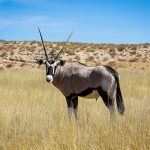
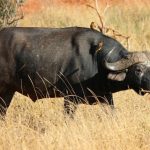
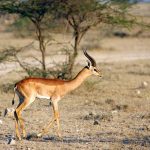
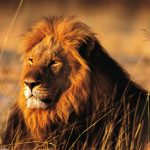


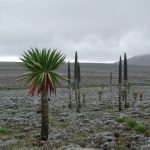
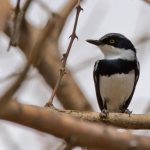





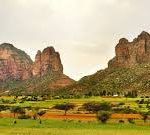
Leave a Reply